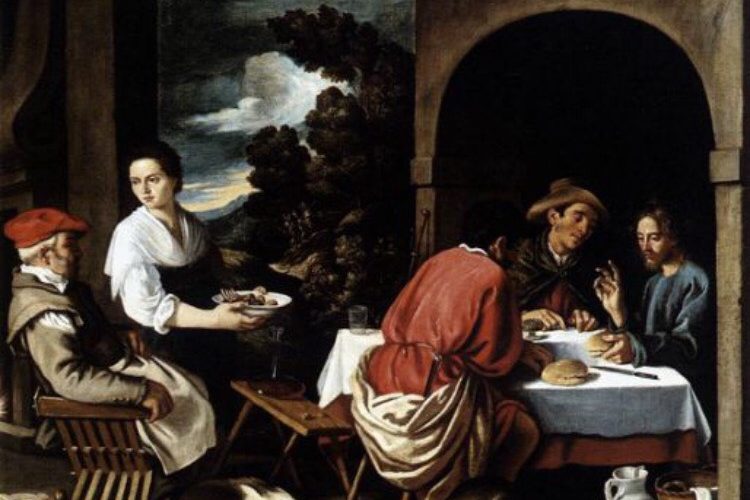By: Tyler Reed
That’s right folks, Ash Wednesday is just around the corner, and the Lenten season is almost under way. In most places throughout the country, people are already discussing what kind of penitential sacrifices they’ll be making for the next 40 days. Here in New Orleans, however, the greater populace is preoccupied with a little thing called Mardi Gras, and that’s not necessarily a bad thing.
For many people outside of the Gulf South, Mardi Gras is often treated like a dirty word. Besides the otherwise harmless colorful floats, beads, and doubloons, the mere mention of Mardi Gras instantly conjures up images of debauchery, drunkenness, and dissipation. Whereas Carnival season certainly has the potential and many times can be all three of these things, I posit that Carnival is more often than not, a safe, family oriented, and even holy event.
I attended my first Mardi Gras in New Orleans while I was in my junior year at Texas A&M University in 2008. Not knowing exactly what to expect other than the stereotypical self-indulgence, I went with an open mind, and hoped for the best. A friend living in Tremé took me to the Krewe of Endymion parade for my first taste of Mardi Gras. I remember scanning the endless crowds of people on the sidewalk from the neutral ground, as they all stood in hungry anticipation for New Orleans’ largest parade to roll by. After about several minutes of observation and taking everything in, I looked over to my friend and gave him a big smile, because it was at this moment I quickly realized that everything I was made to believe about Mardi Gras was a total, downright lie!
Instead of the clichéd crazy college kids, I saw fathers holding their young children by the hand. Instead of young women exposing themselves for beads, I saw young mothers pushing strollers over the neutral ground. It turned out that Mardi Gras parades were actually a great time to be with the family, and celebrate what people in Southern Louisiana call, joie de vivre.
If Ever I Cease to Love
It’s true, the way someone celebrates Mardi Gras in New Orleans is completely up to the individual. If someone is looking for the not so wholesome side of this holiday, they can easily find it, but if someone is looking to celebrate the season with good old-fashioned fun, one can easily do this as well. This past Thursday night, I attended the Krewe of Muses parade (one of the few all-female super krewes) and was instantly reminded of why I love Mardi Gras. Early on in the night, I experienced with friends the love and hospitality of complete strangers who opened their home to us on St. Charles Ave. Being a friend, of a friend, of a friend, who knew the residents, was all it took for them to let me eat their gumbo on their couch. This sort of welcoming experience is not uncommon for people with homes on parade routes. When Mardi Gras is in full swing, people tend to have the attitude of “ the more the merrier”, allowing for the communal aspect of the season to take shape and come alive. This is the true spirit of Mardi Gras, one that not only brings people together, but also brings the best out of people. As the old Mardi Gras anthem goes, “if ever I cease to love, may fish get legs, and cow lay eggs, if ever I cease to love”, because truly, at the core of Mardi Gras is love and generosity.
How to keep Mardi Gras Holy
The Son of Man came eating and drinking and you said, ‘Look, he is a glutton and a drunkard, a friend of tax collectors and sinners.’ Luke 7:34
Christ loved food and drink, which is evident at the Wedding at Canna and elsewhere in the New Testament. He recognized the potential food and drink had when it came to bringing people from all walks of life together, and indeed, even chose to give Himself as food and drink through the Eucharist (John 6:48-68). In Mark 2:16, the scribes and Pharisees who saw Jesus eating with tax collectors and sinners immediately questioned His morality. Jesus responds by telling them that he didn’t come to call the righteous, but sinners. Christ transcended the cultural norms of His day in order to reach out to those who needed Him most, using the occasion of food and drink to do so.
In the same way, Catholics can use the occasion of Mardi Gras to show the love of Christ to others. There are a few practical ways to do so, for instance sharing food and drink with as many people as possible. I believe the best way to keep your Mardi Gras holy is through the example you can set with moderation and temperance. Know when enough is enough, and encourage the people that you’re with to act responsibly, this goes for catching beads as well. If you happen upon people in compromising situations, discern when it is prudent for you to help that person or when you should notify the appropriate authorities. Most importantly, pray for all those who may find themselves in vulnerable circumstances during this time. Mardi Gras was meant to be a fun and safe environment for all involved, and we as Catholics have the responsibility and the moral obligation to claim Mardi Gras for Christ, the true source of all joy!
Now, “throw me something, mister” and “laissez les bon temps rouler”, because it’s Mardi Gras in New Orleans, y’all, and there isn’t a better way to celebrate the joy of life!
Mardi Gras Terms defined
Carnival: From Latin, it literally means “farewell to meat.” Metaphorically, it’s a temporary adieu to the pleasures of the flesh, as the multitudes gather to indulge before Lent. The carnival season begins on Twelfth Night (January 6) and culminates on Mardi Gras day, Fat Tuesday.
Colors of Mardi Gras: Because the first Rex parade honored a Russian prince, the New Orleans Mardi Gras adopted the colors of the royal house of Romanov: purple, green and gold for justice, faith and power, respectively.
Doubloons: These commemorative coins struck for individual krewes are designed with the krewe crest or emblem on one side and the parade and/or ball theme on the other. Some also imprint mottoes; for Rex, it’s Pro bono publico, “For the common good.”
Krewe: A variation of the word “crew,” carnival organizations, all private and non-profit, are known as krewes. The word was invented with a little creative spelling in 1857 by the first New Orleans carnival organization.
Neutral Ground: Grassy medians where crowds stand to watch the parades and beg for carnival throws. When the Americans arrived in New Orleans after the Louisiana Purchase of 1803, they were unwelcome to the Europeans and Creoles who inhabited the French Quarter (then, the entire city of New Orleans). So the immigrants settled across Canal Street and established what is now the Central Business and Arts District. Canal Street then became the “neutral ground” in the clash of cultures. Ever since, New Orleans has been a city sans medians. Here, we have only neutral grounds.
http://www.neworleanscvb.com/calendar-events/mardi-gras/lingo/
About the Author: Tyler Reed

Tyler is in Second Pre-Theology at Notre Dame Seminary.
Disclaimer
All opinions published by the authors on this blog are solely those of the authors. Although the goal is that they should, they do not necessarily express the views and opinions of the Archdiocese of New Orleans, Notre Dame Seminary, the Church, or their respective dioceses and bishops.
Notre Dame Seminary and the Archdiocese of New Orleans are not responsible for the comments of commenters, although every effort will be made to remove offensive comments.
If you should find an error or offensive content, please email the NDS Blog editorial team.

